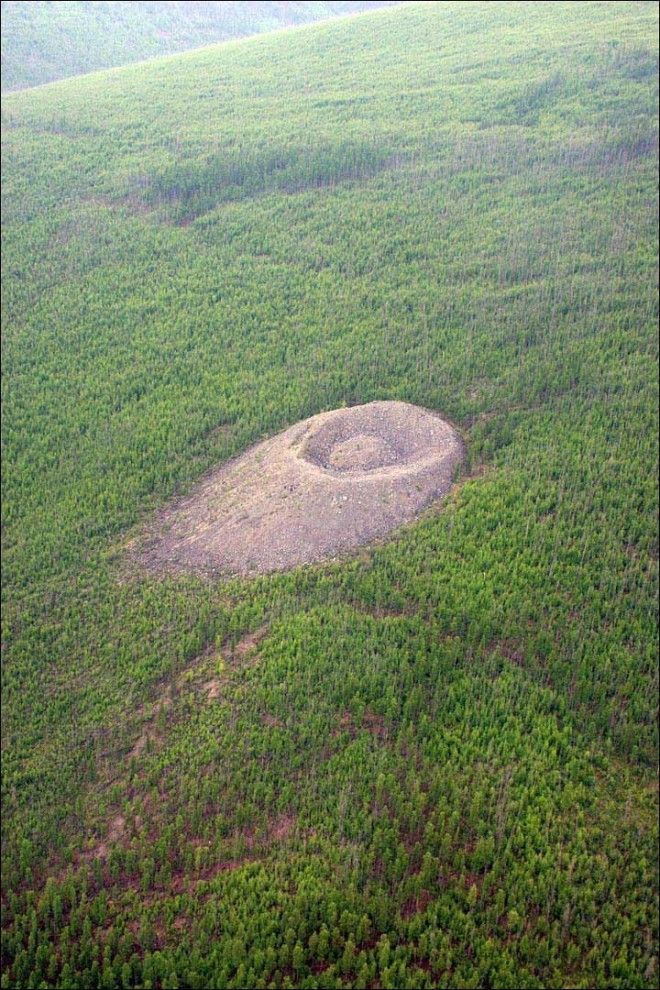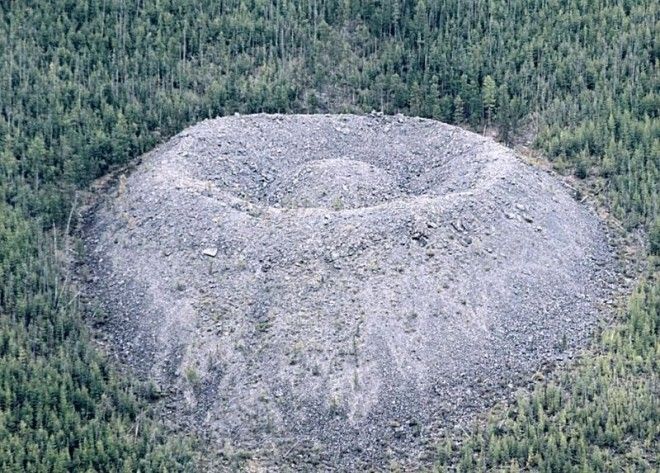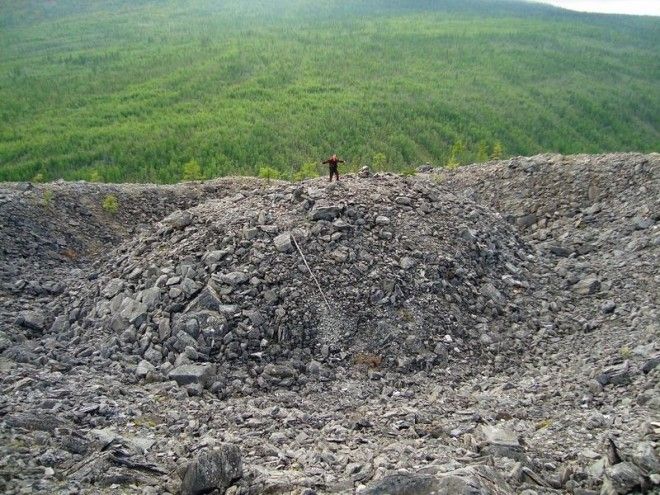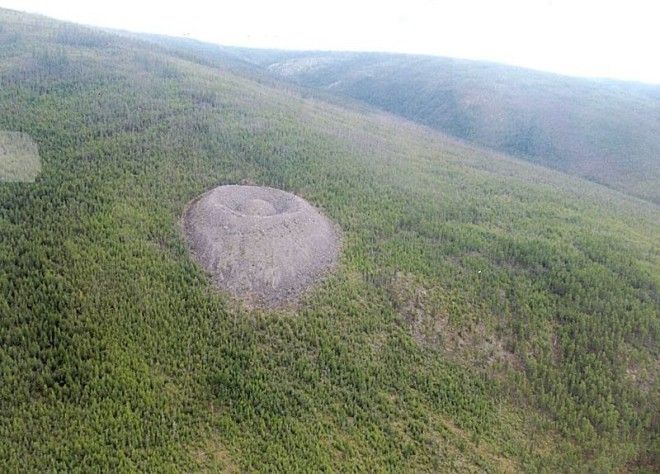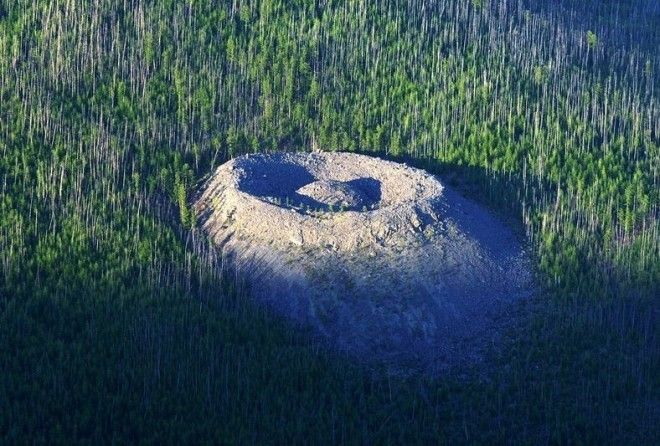Since the discovery of the crater, there have been many theories as to what could have created it. For a long time it was believed to be a meteorite impact structure. Some linked it to the Tunguska meteorite, whose remains have never been discovered. But the crater does not resemble any other known meteorite site. Later, some geologists suggested that it could be a nascent volcano, but no volcanic material has ever been found either.

By counting tree rings of trees growing on the crater, Siberian scientists have calculated the age of the crater to be about 250 years. Interestingly, the trees around the crater show evidence of accelerated growth for a period, similar to that seen in the forests around Chernobyl after the nuclear disaster. This has given rise to wild theories of hidden nuclear plant and buried UFO with nuclear fuel on board. So far no object like the fragments of an asteroid or any metal under the crater has been discovered.
More recent work on the crater has thrown up another more likely explanation — a gas volcano. The mound could have formed by the underground release of some fluids such as hydrogen. The release of heat, which accompanied the underground release of the fluid, caused changes in the size of tree rings which was interpreted as abnormal growth.
Alexander Pospeev, a doctor of geological and mineralogical sciences, told Siberian Times, “Even now, the origin of the crater is not discovered, but we can say for sure that it has earthly origin.”
